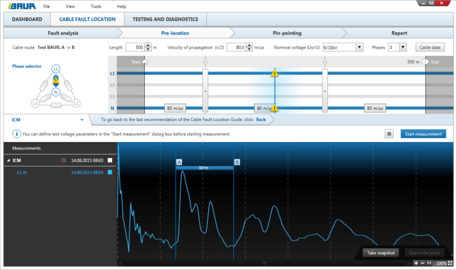The decay method
Cable fault pre-location method

Most faults on medium- and even high-voltage cables can be traced using the available surge voltages of up to 32 kV. However, with intermittent faults (i.e. voltage-dependent faults), this voltage may not be sufficient to trigger a breakdown, meaning that the fault location cannot be determined in this way.
In such cases, the decay method can achieve the desired result. In this procedure, the cable is connected to a test voltage source and the capacitance of the cable charged up until the voltage causes a breakdown.

